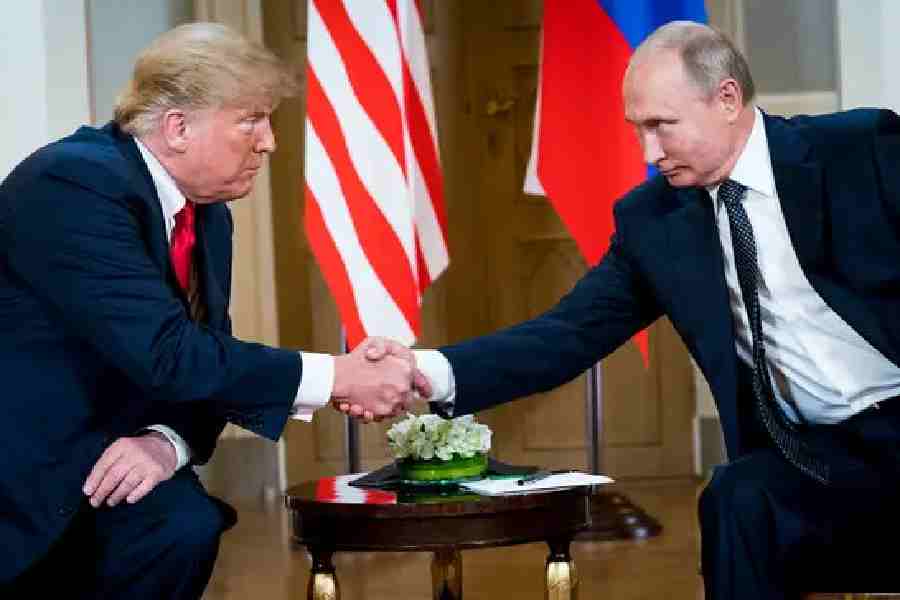A minister of the erstwhile Left Front government in West Bengal had caused a great furore when he went to inaugurate a sculpture of Rabindranath Tagore in Oslo made by Ramkinkar Baij and opined that the bust did not resemble the Nobel Prize-winning poet.
Jogen Chowdhury, born in 1939 in Faridpur (now in Bangladesh), had in the 1950s done some powerful drawings of refugees from Bangladesh at Sealdah station as well as some portraits of himself as an angry young man with intense, glowering eyes. Having been rigorously trained in academic drawing as a student at the Government College of Art & Craft, his mastery of draughtsmanship is awe-inspiring.
However, in the exhibition of Jogen Chowdhury’s 16 pen-and-ink portraits at Debovasha titled Faces of Legendary Bengali Artists (January 11-31), the artist rejected photographic realism and chose to interpret the visages of artists, film-makers, littérateurs in a manner worthy of a practitioner who has a darkly beautiful vision. It found expression in a style that drew heavily on traditional and even folk forms of decoration like the rustic alpana.
Chowdhury drew those portraits on white sheets of paper and used hatching to mould the features of his pre-eminent subjects. He used familiar photographic images to give shape to these likenesses but instead of replicating them, he chose to leave the stamp of his artistry on them. Rabindranath’s gaze becomes inward-looking as the eyes are close-set here (picture, middle left). Gaganendranath is in the winter of his life, while Abanindranath’s hair is youthfully wavy. Their sister, Sunayani Debi, looks straight at the viewer. The play of shadows is the most vivid on Gopal Ghose’s face, brought to life with dense hatching (picture, middle right). Satyajit Ray’s sculpted features, too, are a web of hatching. Meera Mukherjee’s dark eyes look far away (picture, extreme left) while K.G. Subramanyan’s eyes are alive with humour and intelligence (picture, extreme right).










